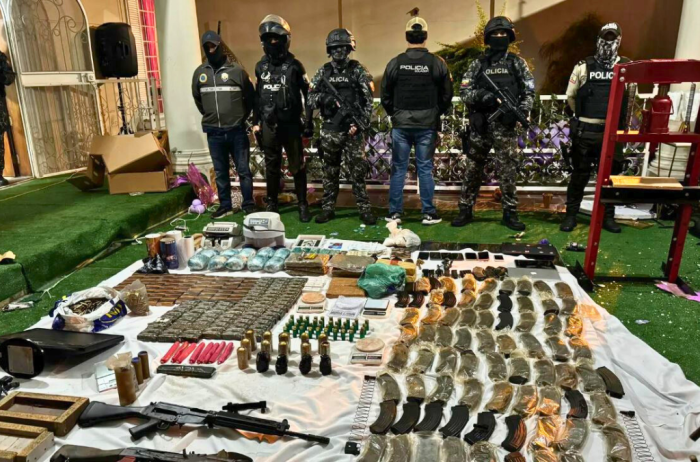WSi News2024-12-05 11:44:58
An operation in South America has resulted in the seizure of more than 28,000kg of explosive materials, 3,400 Improvised Explosive Devices (IEDs) and thousands of other components used in their manufacture
Operation Claymore (11 August – 11 October 2024) brought together law enforcement from nine countries to target the theft, smuggling and trafficking of explosives and related materials. This international collaboration, coordinated by INTERPOL, also led to the seizure of 93,000 metres of detonating cord and safety fuse, 205 grenades, 73,000 detonators and thousands of kilos of chemical precursors. As a result of the operation, 45 individuals were arrested and several related investigations are still ongoing.
In the South American region there is evidence of a particularly high illegal flow of chemicals and components that can be used to make explosives. The trade of these materials is closely linked to organized crime and armed groups because IEDs are used for a range of criminal activities, from terrorist attacks and territorial violence to robberies and strikes on security forces. IEDs are frequently used to inflict maximum harm and devastation, capitalizing on their anonymity and unpredictability to instill fear and chaos.
Authorities in Ecuador inspected a location suspected of storing explosive materials for an organized crime group. On site, police seized eight C4 explosive demolition blocks, 30,000 rounds of ammunition of different calibres, 620 magazines, 15 hand grenades and 750 cylinders of heroin. A woman was arrested.
Colombian police ran an investigation that led to the raid of an improvised explosives factory. They seized 3,000 IEDs made from metal drinking flasks, 800 grenade-type IEDs, 50 small IEDs, 5 tonnes of explosive material and other accessories. Two people were arrested as a result, including one individual who was a bombmaker for an organized armed group.
As well as organized crime, the illicit trade of explosive materials in South America can also be linked to illegal mining. Unauthorized mining not only causes devastating environmental effects but can put the lives of workers and local communities at risk. During the operation, one significant case in Peru resulted in the seizure of 16 tonnes of explosive material and the arrest of 22 people.
Valdecy Urquiza, INTERPOL’s Secretary General, said:
“The black market trade in explosive materials is a major security risk. We're seeing a disturbing rise in terror groups, organized crime and gangs using explosives - from violent attacks to illegal mining operations. This successful operation across South America shows we are making progress, but the threat is real, and global.”
Another key objective of Operation Claymore was to identify and apprehend subjects of INTERPOL Notices concerning chemical and explosive crimes. In one case, the subject of a Red Notice was wanted in relation to an attack on a house in the United States of America. Targeting a former teacher, the suspect had fabricated and detonated a homemade explosive device at a residence. The attack left two people seriously injured and the accused fled to Argentina. Thanks to cooperation between the countries and a detailed investigation by Argentinian authorities that utilized INTERPOL systems, local police were able to locate and detain the individual. Extradition procedures are currently being carried out.
New INTERPOL Notices were also published as part of the two-month operation. In Brazil, authorities issued a Purple Notice for a new method of concealment after discovering 900kg of explosive emulsion, 240 detonators and 100 metres of fuse hidden in a truck’s cargo. The purpose of a Purple Notice is to seek or provide information on modus operandi, objects or devices – highlighting specific methods used by criminals or terrorists. This information is then shared with all INTERPOL members. In this case, officers uncovered the explosives hidden in air filters for trucks and inside large plastic containers labelled as car shampoo.
The operation's success was driven by the effective sharing of intelligence, the integration of specialized resources and the adoption of best practices in response to the theft, smuggling and trafficking of explosives. This enabled participating countries to identify the source of IED materials, detect their diversion, and dismantle related criminal networks. INTERPOL's secure communication channels and databases also played a key role, enabling law enforcement agencies to share critical information in real-time. This facilitated the identification of suspects and the tracing of materials.
